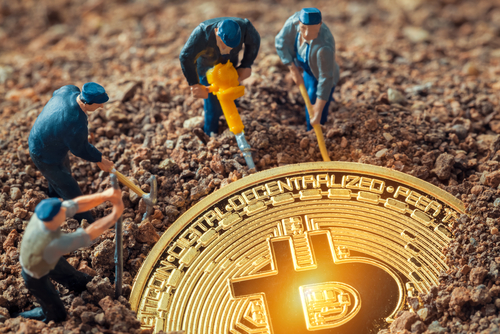
[셔터스톡]
On the morning of March 12, the price of bitcoin surpassed $58,000, making it one step closer to its historic high. As Bitcoin becomes more and more popular, the cryptocurrency market is busy. Financial economist Alex de Vries wrote in Joule, an energy journal published by Cell Press, a world-renowned journal in life sciences on March 11. It worsened and even published reviews that quantified how they were threatening them. The following is a summary reported on March 12 by Jinseo Chaising.
# Bitcoin Network Annual Energy Consumption = Total amount of energy in all data centers worldwide
In theory, any computer with access to the Internet and electricity can’mine’ Bitcoin. This is the process of obtaining cryptocurrency by solving complex mathematical equations using a computer. From January 11, 2021, all’coin miners’ (actually miners solve the problem) are expected to have more than 150 million to the 5th power per second to solve this equation, which is followed by the number 150. There are as many as 18 zeros. Currently, computing power and electricity bills have become key to calculating Bitcoin profitability.
The hidden costs arise mainly from energy consumption. Based on the Bitcoin price in January, the entire Bitcoin network is expected to consume up to 184 TWh of energy each year, which is equivalent to the total amount of energy consumed by all data centers around the world. The energy consumed also produced 90.2 million tonnes of carbon dioxide, which is the carbon footprint of London, England.
“This is a worrisome number,” de Vries said. “Data centers around the world serve most of the civilized world, but bitcoin consumes almost the same amount of electricity as electrons, even though it serves almost nobody.” Pointed out.
Bitcoin’s market price and profitability encourage miners to invest more in hardware and electricity. As prices rise, energy consumption is steeper as more people buy and implement the hardware needed to mine coins. Conversely, when prices fall, these inputs and consumptions also fall. However, due to the high demand now, hardware equipment manufacturers are releasing news of sold out one after another, and some additional orders are not possible. It can be seen that once the equipment is purchased, the energy consumption is’fixed’ in the same amount.
The short shelf life of Bitcoin miners means that a large amount of e-waste will be generated over the next few years. In addition, these devices are competing for the same chips as personal electronics and electric vehicle companies, which exacerbated the worldwide chipset shortage. Personal electronics and electric vehicles play an important role in coping with climate change. However, countries with low electricity rates, such as Iran, may create new sources of income through bitcoin mining.
“The authorities can do a lot of things,” de Vries points out. “Coin mining facilities are generally centralized, so they can easily be targeted.” Decision makers could intervene by raising the price of electricity or confiscation of equipment, taxing Bitcoin mining equipment manufacturers, or restricting the use of chipsets could also be considered. Bitcoin is a decentralized currency, but government agencies can regulate the exchange and prevent the transaction itself from affecting the price.
“The information we currently know is limited,” he warned of predictions about Bitcoin’s future trends. He added, “Who knows what will happen in 2024? Maybe everyone is using Bitcoin, maybe nobody, maybe everyone has forgotten it.”
![]()
